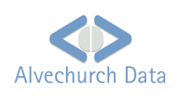How to hide Access from the user
Microsoft Access is at heart a database for users. It provides a lot of useful features
so that the average user can work with their database by just selecting a menu option or
clicking a button on the toolbar. Sometimes though you want to remove these features so
that your application has a cleaner interface and the user can focus on the controls that
you have provided.
You may want to hide the database window so that your form is all that's visible on screen
or you might want to go further and hide everything except your main form.
Hide the Access Database Window
![MS Access startup options [Hide the Access window at startup]](../media/images/accnodatabase.gif) Hiding the Database Window from the user is easy. You just set it as one of the Access
startup options by
selecting from the menu and then removing the tick from the
tickbox as shown in the
screenshot opposite.
Hiding the Database Window from the user is easy. You just set it as one of the Access
startup options by
selecting from the menu and then removing the tick from the
tickbox as shown in the
screenshot opposite.
This still leaves the user able to press to restore the
Database Window. You need to suppress this as well by clearing the
tickbox. This is on the Advanced
section of the startup options dialog.
Hide the Database Window in code
If you want more control over the behaviour of the window - perhaps you want to hide it
from most users and just show it to the administrator - you can hide the window with some
VBA code:
DoCmd.SelectObject acTable, , True
DoCmd.RunCommand acCmdWindowHide
The first line here sets focus to the Database Window by specifically asking to
select the Table pane from that window. This forces the Database Window to be the current
window and the second line then hides that window.
Hide Access from the user completely
![MS Access form on the desktop [Hiding Microsoft Access altogether]](../media/images/accontop.gif) This trick is more difficult but it is still possible. The screenshot opposite shows an
Access form floating on top of the Windows desktop with no sign of the main Access
window. The only clue telling us that this is Access is the fact that there's an Access
form icon in the title bar. With a little more effort I could have changed that icon and
made this look like a real Windows application rather than "just" another Access
database.
This trick is more difficult but it is still possible. The screenshot opposite shows an
Access form floating on top of the Windows desktop with no sign of the main Access
window. The only clue telling us that this is Access is the fact that there's an Access
form icon in the title bar. With a little more effort I could have changed that icon and
made this look like a real Windows application rather than "just" another Access
database.
This switchboard is
the first form that will appear when the user opens the database but it is not the main
form of the application. There is another form and this is where the work is being done.
Its only job is to make a call to the Windows API when it opens.
There are no controls on this form and the user will never see it but it must have two of
its properties set:
It must also be set as the main form of the database in the Access
start up options.
VBA program code
There are four pieces of VBA code required to make this work. Three are in the first form:
1. Declare the Windows API call:
Const SW_HIDE = 0
Const SW_NORMAL = 1
Const SW_MINIMIZED = 2
Const SW_MAXIMIZED = 3
Private Declare Function ShowWindow Lib "user32" _
(ByVal hwnd As Long, ByVal nCmdShow As Long) As Long
2. Make the call to hide the whole Access window and then open the main form for the user:
Private Sub Form_Open(Cancel As Integer)
Call ShowWindow(hWndAccessApp, SW_HIDE)
DoCmd.OpenForm "Switchboard",
windowmode:=acDialog
End Sub
3. Reset the Access window when the application closes:
Private Sub Form_Unload(Cancel As Integer)
Dim lngRetCode As Long
lngRetCode = ShowWindow(hWndAccessApp, SW_MAXIMIZED)
End Sub
There is one last piece of code to be added but this must be added to the user's form
rather than to the hidden startup form. It's needed so that Access will close when the
user closes their main form. The technique will appear to work without this last bit of
code but what you won't see is that Access itself will still be running. We have to make
sure that Access will be closed down when the user closes the form and the way to do it
is to add this line to the event of the switchboard form:
Private Sub Form_Unload(Cancel As Integer)
Application.Quit
End Sub
Stop Press
This last technique does not work with Access 2007 under Windows 7. I was planning to
work through this web site, replacing the old Access 2000 and Access XP screenshots with
some nice new Access 2007 images, but when I tried to run this example I found that the
code was ignored and the form just opened as normal in the Access window.
Just another little niggle to be fixed when upgrading to the new version.
|



